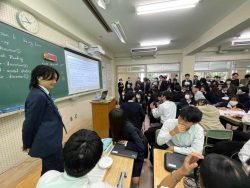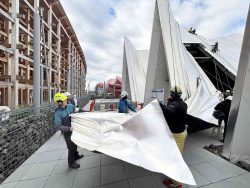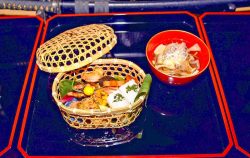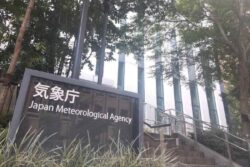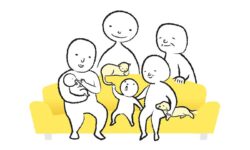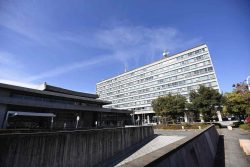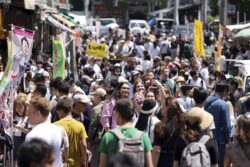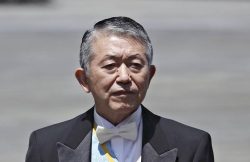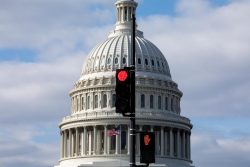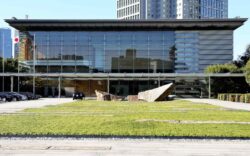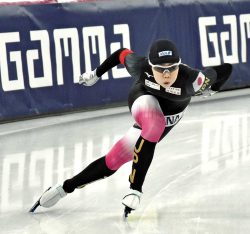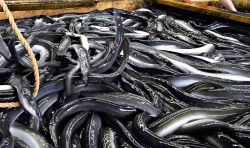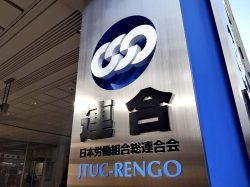Students Develop Local Products; Learn About SDGs; Sustainability, Responsible Consumption Among Themes
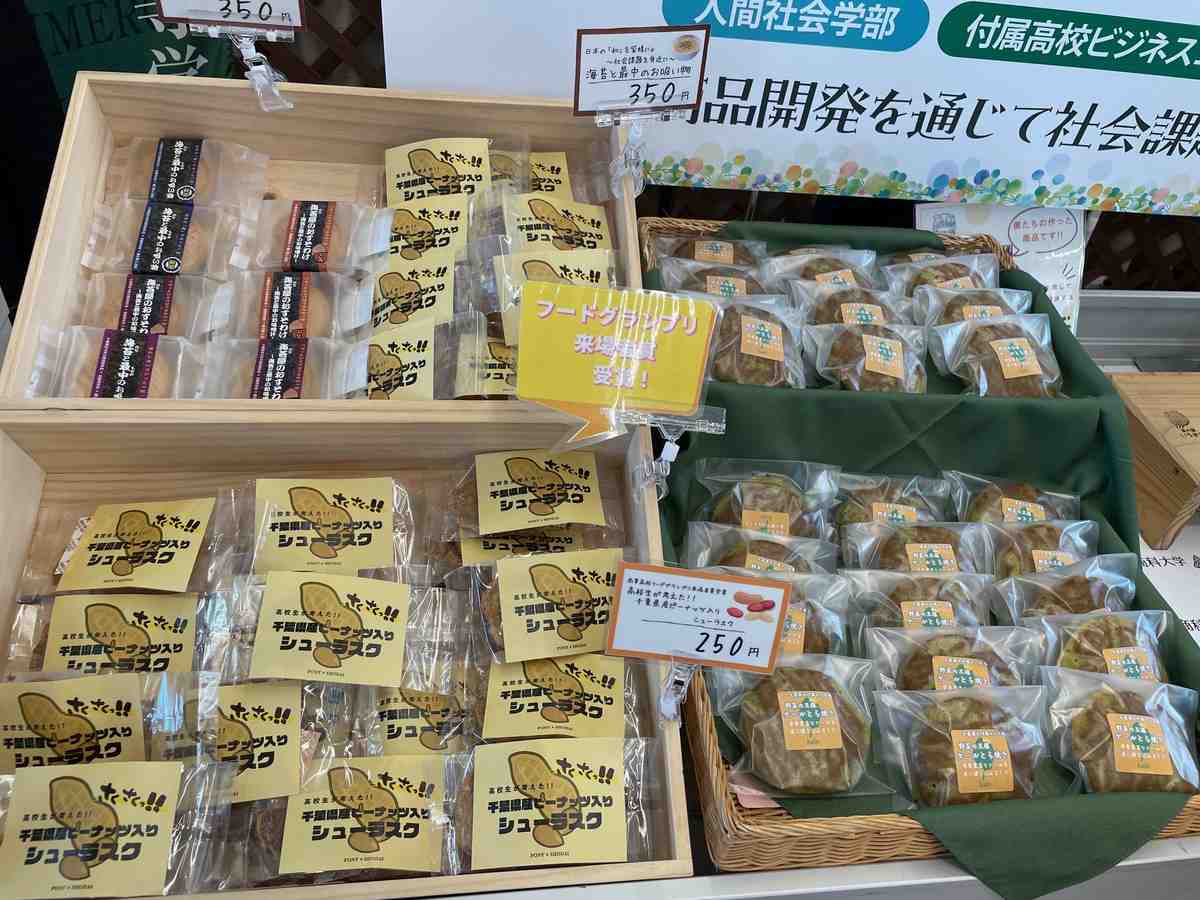
Sweets and soup developed by high school students that were sold at a Michi-no-Eki roadside rest area in Ichikawa, Chiba Prefecture. They utilize scraps of pie dough and seaweed powder that would otherwise have been discarded.
8:00 JST, April 12, 2025
You have probably heard the term SDGs (Sustainable Development Goals). You may even recall specific goals, accompanied by colorful pictograms. The SDGs are initiatives set forth globally to ensure that everyone can live safely and securely on this planet into the future. The SDGs also form a fundamental framework for the education of the next generation.
The SDGs refer to the 17 goals outlined in the 2030 Agenda for Sustainable Development, adopted at a U.N. summit in 2015. The goals encompass a wide range of issues, from basic human rights such as food, clothing, shelter and education to socioeconomic and environmental challenges. For example, Goal 1 is “no poverty,” Goal 2 is “zero hunger,” Goal 3 is “good health and well-being,” and Goal 4 is “quality education.” The initiative calls not only on national and local governments, but also on corporations and individuals, to take action.
On Dec. 22 of last year, I visited a Michi-no-Eki roadside rest area in Ichikawa, Chiba Prefecture, to observe an SDG-themed educational initiative. There, students from Chiba University of Commerce and its attached high school were holding a Christmas event at which they sold products they had developed themselves. While local residents performed music on an outdoor stage, students enthusiastically called out, “How about trying the products we created?” from the sales area near the entrance, selling a variety of products.
The products include various flavored dressings made with locally grown vegetables such as leeks, spinach and daikon radish, traditional Japanese and Western sweets developed in collaboration with local confectionery stores, and instant seaweed miso soups developed with seaweed processors. All were developed during seminars and classes with a mission to “solve social issues through product development,” using the SDGs as a guiding framework.
One example of how product development began was a request from a farmer to the university: “Sixty percent of our garlic harvest is discarded because it doesn’t meet size standards. Is there any way to use it?” Upon hearing this, university students began experimenting with incorporating the garlic into dressings. After a year of trial sales, they launched the product as “Whole Jumbo Garlic Dressing.”
The high school students were no less innovative. They created new confections using leftover pastry trimmings from a local bakery that makes nashi pear pies, combined with peanut paste made with locally grown peanuts. The two kinds of confections they developed were entered into the National Commercial High School Food Grand Prix, where they won first place twice based on visitor votes.
Each of these product development projects is linked to one or more of the 17 SDGs. For example, reducing food loss relates to Goal 12, “responsible consumption and production.”
The Christmas event itself was also planned by the students. Chika Ashida, then a third-year high school student who managed the outdoor stage, said with a smile, “It was tough negotiating with adults, but I’m glad the event turned out so well.” Taketo Asou, the “station master” of the Michi-no-Eki, commented: “Young people bring energy. Local residents are growing fond of and supportive of the products created by the youth in the area,” acknowledging the contribution to community revitalization.
The initiatives for understanding local issues through the lens of SDGs and addressing them through product development began separately at the university and the high school. At the university, one initiative started in 2016 as part of a seminar led by Prof. Takayuki Teshigawara of the Faculty of Humanities and Social Sciences. His goal was community revitalization through the methods of social business. To date, over 30 products have been successfully commercialized.
At the attached high school, Keisuke Tana, a teacher in the commercial department, launched the other initiative in 2019 as a project-based learning activity to solve “business challenges.” Students worked in teams by partnering with local businesses such as Japanese and Western confectioners, during classes like marketing, product development and distribution, and project study.
Today, the university and the high school jointly carry out product development and sales events. Teshigawara said: “Using the SDGs as a foundation, the idea is to have students learn the basics of commerce in high school, then add a sociological perspective in university. We aim to create an ongoing, evolving form of learning — not just a one-time experience — so students can go beyond knowing the SDG goals and numbers and actually put them into practice.”
Education focused on SDGs is being dynamically implemented in elementary schools as well.
On March 2, I visited Abiko Daini Elementary School in Abiko, Chiba Prefecture, where I observed sixth-grade students harvesting spinach they had grown in a schoolyard garden, and selling it at a nearby community center. Teacher Yosuke Ito, whom I had met through an academic event, invited me to cover the SDGs class he and his colleague were conducting together.
The class was part of the school’s integrated studies curriculum. In an effort to increase local pride and awareness, the students decided to grow local specialty vegetables and incorporate them into products to sell. They grew tomatoes first, then spinach. As they encountered issues like where to plant, how to improve the soil, and how to sell the final product, the students collaborated to find solutions.
When they couldn’t solve a problem on their own, they sought help from adults. When they grew tomatoes, they asked farmers to come and teach them how to grow them. When they decided to make sweets from the tomatoes, they worked with a food science professor and students from a nearby university to develop recipes. After learning they couldn’t obtain municipal health department approval to manufacture the sweets themselves, they partnered with a local bakery to handle production.
Reflecting on their experience, students said things like, “We could do it because the community helped,” “I realized that there’s always someone in the community who can help,” and “By following through to the end, I developed the strength to persevere.” Hideaki Sakuta, a 78-year-old local leader who offered the space for the spinach sale, said: “Children are also members of the community. Creating opportunities for children to be active is vital to revitalizing local society.”
According to Ito, the starting point of the learning wasn’t the SDGs themselves, but rather working together to solve local issues. However, he said, no matter what the students worked on, the outcome always tied back to the SDGs. For example, revitalizing the local community connects directly to Goal 11, “sustainable cities and communities.”
When he explained this to the students, they immediately understood.
Combining the SDG perspective with local issues seems to deepen students’ learning.
In the past, addressing local issues was typically done by public elementary and junior high schools, where schools serve small areas and teachers and students have strong ties to the local shopping streets and neighborhoods. However, high schools serve wider areas, and schools often lose that close connection to the local community. As a result, many schools chose to focus solely on SDGs in a somewhat abstract way.
Focusing solely on the SDGs can end up being a mere internet search about what is happening in some distant place. Therefore, high schools are now encouraging students to consider the SDGs in the context of their own community and to recognize global issues as their own. Similarly, elementary schools are more consciously incorporating SDG perspectives to ensure that solutions to local issues are not misdirected.
The SDGs serve as guideposts to ensure learning goes in the right direction. We are all members of our communities, but we are also members of the human race on this planet. Children must learn that solving local problems should not hurt the planet we live on, and at the same time learn how to take global responsibility without sacrificing the quality of life in their own communities.
Political Pulse appears every Saturday.

Makoto Hattori
Makoto Hattori is a staff writer in the Yomiuri Research Institute
"Editorial & Columns" POPULAR ARTICLE
-

Violations of Subcontract Law: Major Automakers Must Eliminate Old Practices
-

Local Governments’ Tax Revenues: Devise Ways to Correct Imbalances in Tax Sources
-
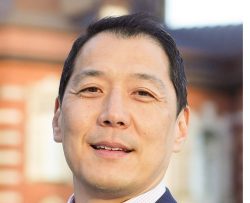
5 Japanese Business Dinner Mistakes to Avoid — and What They Taught Me About Business in Japan
-

Heavy Rains in Asia: Support for Victims, Flood-Control Measures Urgently Needed
-

Rice Coupons: A Misguided Approach to Countering Rising Prices
JN ACCESS RANKING
-

Keidanren Chairman Yoshinobu Tsutsui Visits Kashiwazaki-Kariwa Nuclear Power Plant; Inspects New Emergency Safety System
-
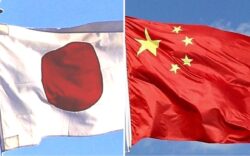
Imports of Rare Earths from China Facing Delays, May Be Caused by Deterioration of Japan-China Relations
-

University of Tokyo Professor Discusses Japanese Economic Security in Interview Ahead of Forum
-
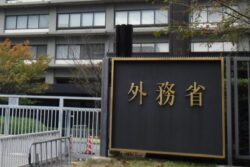
Japan Pulls out of Vietnam Nuclear Project, Complicating Hanoi’s Power Plans
-
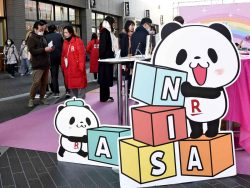
Govt Aims to Expand NISA Program Lineup, Abolish Age Restriction


